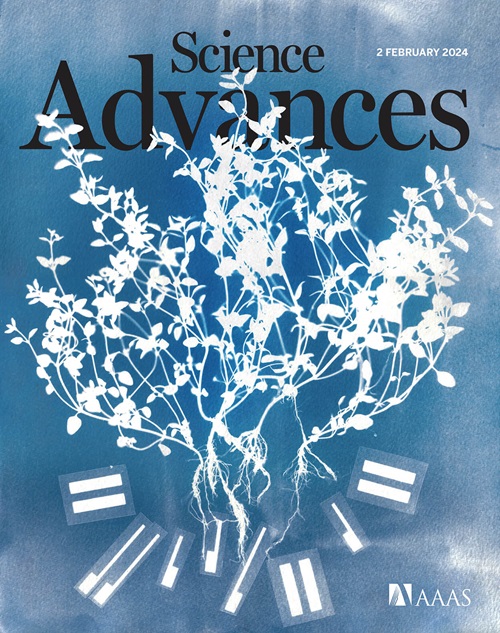外源细菌纤维素通过调节细胞分裂素和防御网络诱导植物组织再生
IF 12.5
1区 综合性期刊
Q1 MULTIDISCIPLINARY SCIENCES
引用次数: 0
摘要
再生是在植物中广泛观察到的胚胎后发育的独特特征。外源诱导再生的能力是有限的,通常局限于分生组织样组织。我们发现细菌纤维素(BC),而不是其他结构相似的基质,通过一种独特的愈伤组织介导的再生程序诱导非分生组织的损伤后再生。bc特异性程序涉及细胞分裂素与强烈激活的植物生物反应基因同时工作,以诱导植物再生。通常与防御反应相关的活性氧(ROS)爆发在BC应用后持续存在,涉及紧密连接的转录因子网络,其中以调节应激反应而闻名的WRKY8显示出集群和分层流行。WRKY8调节bc介导的植物再生和ROS稳态,包括超氧阴离子积累,可能促进损伤后的细胞增殖。总之,我们的研究结果表明,细胞分裂素和ros相关的防御反应可以通过BC的应用来促进植物伤口再生。本文章由计算机程序翻译,如有差异,请以英文原文为准。
Exogenous bacterial cellulose induces plant tissue regeneration through the regulation of cytokinin and defense networks
Regeneration is a unique feature of postembryonic development extensively observed in plants. The capacity to induce regeneration exogenously is limited and usually confined to meristematic-like tissues. We show that bacterial cellulose (BC), but not other structurally similar matrixes, induces postwounding regeneration in nonmeristematic plant tissues via a distinctive route to callus-mediated regenerative programs. The BC-specific program involves cytokinin operating concurrently with strongly activated plant biotic response genes to induce plant regeneration. A reactive oxygen species (ROS) burst, normally associated with defense responses, is sustained upon BC application, involving a network of tightly interconnected transcription factors, where WRKY8, known for regulating stress responses, shows a clustering and hierarchical prevalence. WRKY8 regulates BC-mediated plant regeneration and ROS homeostasis, including superoxide anion accumulation, to potentially promote cell proliferation after wounding. Collectively, our results demonstrate that the cytokinin- and ROS-associated defense responses can be targeted by BC application to promote plant wound regeneration through alternative regenerative programs.
求助全文
通过发布文献求助,成功后即可免费获取论文全文。
去求助
来源期刊

Science Advances
综合性期刊-综合性期刊
CiteScore
21.40
自引率
1.50%
发文量
1937
审稿时长
29 weeks
期刊介绍:
Science Advances, an open-access journal by AAAS, publishes impactful research in diverse scientific areas. It aims for fair, fast, and expert peer review, providing freely accessible research to readers. Led by distinguished scientists, the journal supports AAAS's mission by extending Science magazine's capacity to identify and promote significant advances. Evolving digital publishing technologies play a crucial role in advancing AAAS's global mission for science communication and benefitting humankind.
 求助内容:
求助内容: 应助结果提醒方式:
应助结果提醒方式:


